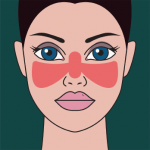Greater recognition of prodromal, early neuropsychiatric symptoms could enable quicker flare identification and treatment with immune suppression in combination with an antipsychotic. Dr. Sloan adds that although such symptoms as fatigue and cognitive dysfunction are often considered challenging to treat or multifactorial for many patients, she and her colleagues have heard from many patients treated with belimumab, cyclophosphamide or other medication who felt their fatigue and cognitive dysfunction improved or resolved with treatment. This anecdotal evidence suggests a possible direct relationship between neuropsychiatric symptoms and the disease process in some patients, says Dr. Sloan.
Focusing on Lupus
The research on neuropsychiatric symptoms and SARDs provided the foundation for research focusing on patients with SLE. Dr. D’Cruz explains that Dr. Sloan has a “huge online cohort of lupus patients.” The research team used this cohort of more than 1,800 patients with lupus and other patients with inflammatory autoimmune diseases, as well as Dr. D’Cruz’s clinical observation that nightmares often preceded SLE flares, as a basis for their study, which sought to identify a clinically helpful neuropsychiatric prodrome of SLE.
“The dreaming aspect was actually only one of the many symptoms that we studied,” says Dr. Sloan. “Most of the symptoms were included in the study because patients asked us to, or from us asking patient groups what symptoms they were experiencing. Our team research ethos is that we always start with the patients, what they want us to research, and what symptoms they are actually experiencing.”
The investigators surveyed patients and requested that, as a control, the patients ask a healthy person to fill in the same questionnaire. The researchers also sent questionnaires to rheumatologists, neurologists and psychiatrists. The team then performed exploratory qualitative analyses of 36 neuropsychiatric symptoms in SLE and other SARDS. Many of these neuropsychiatric symptoms had never been explored in rheumatology patients. They proposed two criteria as clinically helpful in identifying prodromal symptoms: 1) within-person similarity of prodrome symptoms in recurrent flares, and 2) degree of similarity of prodromal symptoms among patients.
The researchers found that SLE patients much more commonly experience nightmares and other neuropsychiatric symptoms when compared with a cohort of their socio-demographically matched, physically healthy friends.
“We would encourage patients to keep symptom journals and monitor the changes in symptoms when their disease is active and becoming more active,” says Dr. Sloan. “What we found was that most patients had a similar progression of symptoms in each of their flares, although each person often had a pattern of symptoms and progression unique to them.”
